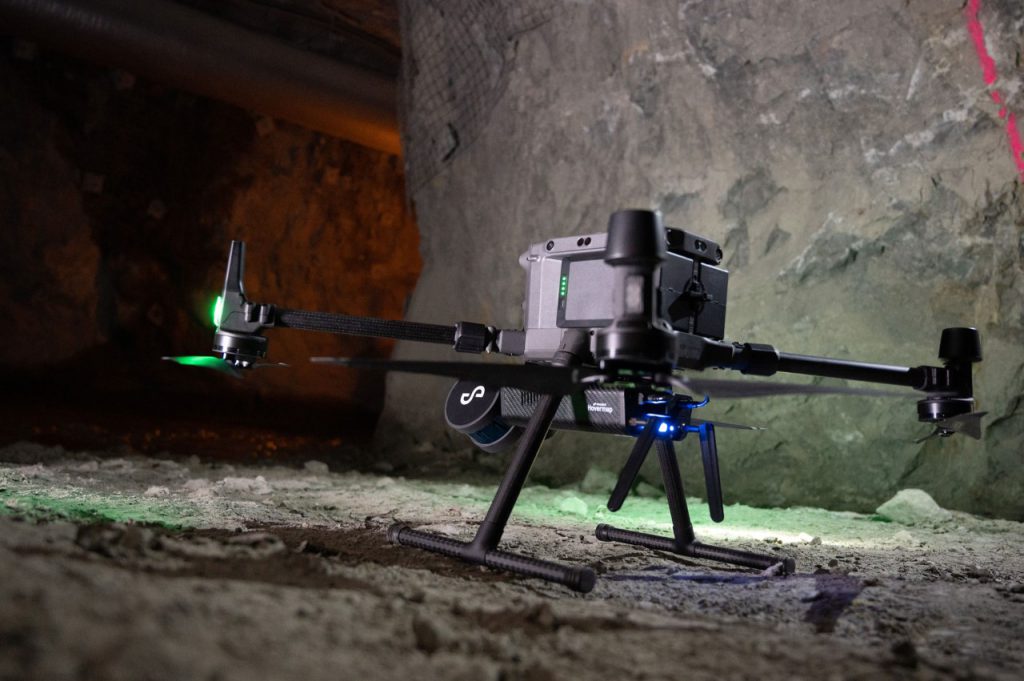
Petra Diamonds has interests in eight in South Africa and Tanzania, which produce a total of around 3,700,000 carats a year. The company’s Finsch underground mine in South Africa is often used as a testbed for new technology, prior to its deployment across other Petra sites.
Historically scanning and mapping inaccessible shafts and voids has been a challenge for Petra
Finsch uses orepasses and underground silos to transfer ore between levels or to redirect ore for load and haul to the surface. Blockages, hang-ups, overbreak or scaling can impact the structural integrity and result in extended downtime and significant remediation costs. Accurate imagery enables mine engineers to gauge the integrity of orepasses and plan timely and cost-effective remediation programs.
The company’s management sought a way to obtain accurate visualizations of underground voids, quickly and cost effectively, without endangering the safety of personnel or contractors. Management trialed the Hovermap multiple data capture methods. Petra contracted Emesent’s partner, Dwyka Mining Services, to carry out multiple scans of an indoor stockpile, orepasses and vertical shafts, and a series of access tunnels and ramps.
For one of the orepasses, management needed to decide between scheduling remediation to repair long term scaling, or abandonment.
Dwyka spent a day onsite conducting a series of scans using Hovermap mounted to vehicles, a drone, or lowered in a protective cage.
“We lowered Hovermap down orepasses, flew the drone into drawpoints and even scanned our shaft and ramps by fixing the scanner to one of our vehicles. The visualization delivered exceeded all our expectations. The data captured in one ore pass saved us significant time and effort by confirming it was irreparable,” Alex Holder, group planning and projects lead at Petra Diamonds, said in a release.
Dwyka delivered accurate point cloud data sets for Petra’s survey team to geo-reference and analyze, within 24 hours. They also provided visualizations of the orepasses, enabling the mine engineers to ‘see’ the condition of orepasses for the first time.
Using Hovermap led to an immediate decision to abandon plans to expend resources remediating a compromised ore shaft. This decision saved Petra an estimated five months and five million rand (US$350,000).
“The ability to power and switch the Hovermap payload between the various applications meant that we were able to scan a considerable amount of the mine in one shift. Generally, this was either impossible and, if it were possible, it would take weeks to collect those datasets and months to see the final visuals.” added Heinrich Westermann, mining engineer at Petra Diamonds.
The data collected by Hovermap has become the basis of a data library for the site. It is augmented regularly and used to inform operational decision-making by Petra’s mine planning and survey teams.
Petra intends to deploy Hovermap scanning technology to map inaccessible locations at its other sites across Africa.
(This article first appeared in the Canadian Mining Journal)




